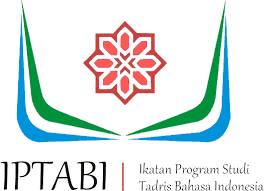Perubahan Fonologis Bahasa Gaul dalam Percakapan Whatsapp Kelompok Siswa Kelas 9 MTs Muhammadiyah 05 Kemusu
Abstract
Keywords
Full Text:
PDFReferences
Almos, R. (2012). Fonologi Bahasa Minangkabau: Kajian Transformasi Generatif. Wacana Etnik. 3(2). 143-163.
Chaer, A. (2013). Fonologi Bahasa Indonesia. Jakarta: Rineka Cipta.
Hendrastuti, R. (2015). Variasi Penggunaan Bahasa pada Ruang Publik di Kota Surakarta, Kandai, 11(1), 29-43.
Kridalaksana, H. (2001). Kamus linguistik. Jakarta: Gramedia.
Maemunah, E. (2016). Penggunaan Bahasa Mahasiswa Multietnik dalam Media Sosial. Jalabahasa, 12(2), 47-57.
Maisaroh, Q. (2017). Penimba Bahasa. Yogyakarta: Jagad Abjad.
Moleong, L. J. (2005). Metodologi Penelitian Kualitatif. Bandung: Remaja Rosdakarya.
Muslich, M. (2009). Tata Bentuk Bahasa Indonesia Kajian ke Arah Tata Bahasa Deskriptif. Jakarta: Bumi Aksara.
Oktavia, W. (2018). Penamaan Bunyi Segmental dan Suprasegmental pada Pedagang Keliling. Jurnal Bahasa Lingua Scientia, 10(1). 1-16.
Sari, B. P. (2015). Dampak Penggunaan Bahasa Gaul di Kalangan Remaja Terhadap Bahasa Indonesia. Prosiding Seminar Nasional Bulan Bahasa UNIB (pp.171-176).
Sartini, N. W. (2012). Bahasa Pergaulan Remaja: Analisis Fonologi Generatif. Ilmu Humaniora, 12(2), 122-132.
Sugiyono. (2014). Metode Penelitian Kuantitatif Kualitatif dan R&D. Bandung: Alfabeta.
Suharyo. (2018). Nasib Bahasa Jawa & Bahasa Indonesia dalam Pandangan dan Sikap Bahasa Generasi Muda. Nusa, 13(2), 244-255.
Suyanto, B. (2006). Bahasa Gaul: Kreativitas Linguistik Kaum Muda. Semiotika, 7(1),102-118.
Wijana, I. D. P. (2010). Bahasa Gaul Remaja Indonesia. Yogyakarta: Aditya Media Publishing.
Zakiyah. (2017). Citra Diri Mahasiswi IAIN Surakarta Sebagai Pengguna Media Sosial Instagram. Skripsi. IAIN Surakarta.
DOI: http://dx.doi.org/10.29240/estetik.v3i1.1464
Refbacks
- There are currently no refbacks.
Copyright (c) 2020 Wahyu Oktavia

This work is licensed under a Creative Commons Attribution-NonCommercial-ShareAlike 4.0 International License.
INDEXED BY:

This work is licensed under a Creative Commons Attribution-NonCommercial-ShareAlike 4.0 International License.
.














